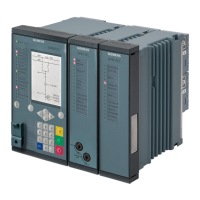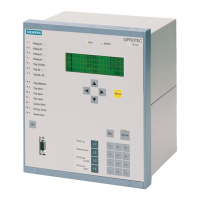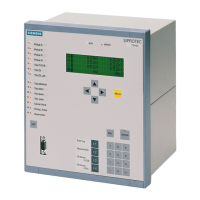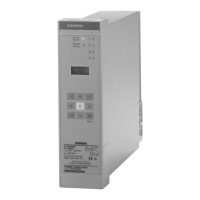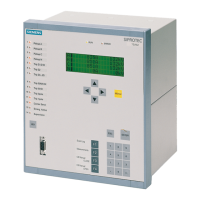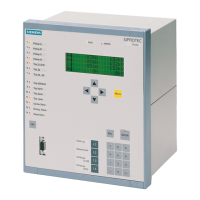Functions
2.26 Rate-of-Frequency-Change Protection df/dt (ANSI 81R)
SIPROTEC, 7UM62, Manual
C53000-G1176-C149-7, Release date 03.2010
193
2.26 Rate-of-Frequency-Change Protection df/dt (ANSI 81R)
With the rate-of-frequency-change protection, frequency changes can be quickly detected. This allows a
prompt response to frequency dips or frequency rises. A trip command can be issued even before the pickup
threshold of the frequency protection (see Section 2.23) is reached.
Frequency changes occur for instance when there is an imbalance between the generated and the required
active power. They call for control measures on the one hand and for switching actions on the other hand.
These can be unburdening measures, such as network decoupling, or disconnection of loads (load shedding).
The sooner these measures are taken after malfunctioning, the more effective they will be.
The two main applications for this protection function are thus network decoupling and load shedding.
2.26.1 Functional Description
Measuring Principle
From the positive-sequence voltage, the frequency is determined once per cycle over a measuring window of
3 cycles, and a mean value of two consecutive frequency measurements is formed. The frequency difference
is then determined over a settable time interval (default setting 5 cycles). The ratio between frequency differ-
ence and time difference corresponds to the frequency change; it can be positive or negative. The measure-
ment is performed continuously (per cycle). Monitoring functions such as undervoltage monitoring, checks for
phase angle jumps etc. help to avoid overfunctioning.
Frequency Increase/ Decrease
The rate-of-frequency-change protection has four stages, from df1/dt to df4/dt. This allows the function to be
adapted variably to all power system conditions. The stages can be set to detect either frequency decreases
(-df/dt) or frequency increases (+df/dt). The -df/dt stage is only active for frequencies below the rated frequency,
or less if the underfrequency enabling is activated. Likewise, the df/dt stage is active for frequencies above the
rated frequency, or higher, if the overfrequency enabling is activated. The parameter setting decides for what
purpose the particular stage will be used.
To avoid a proliferation of setting parameters, the settable measuring window for the frequency difference for-
mation and the dropout difference are each valid for two stages.
Operating Ranges
The frequency can be determined as long as there is a sufficiently strong positive sequence system of voltages.
If the measurement voltage drops below a settable value U MIN, frequency protection is disabled because
precise frequency values can no longer be calculated from the signal.
Time Delays/Logic
Tripping can be delayed by a set time delay associated with each applied time stage. This is recommended for
monitoring small gradients. When the time delay expires, a trip signal is generated. After pickup dropout the
tripping command is immediately reset, but not before the minimum command duration has expired.
Each of the four frequency change stages can be blocked individually by binary input. The undervoltage block-
ing acts on all stages simultaneously.
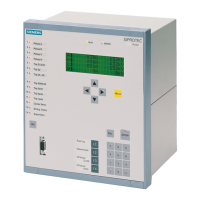
